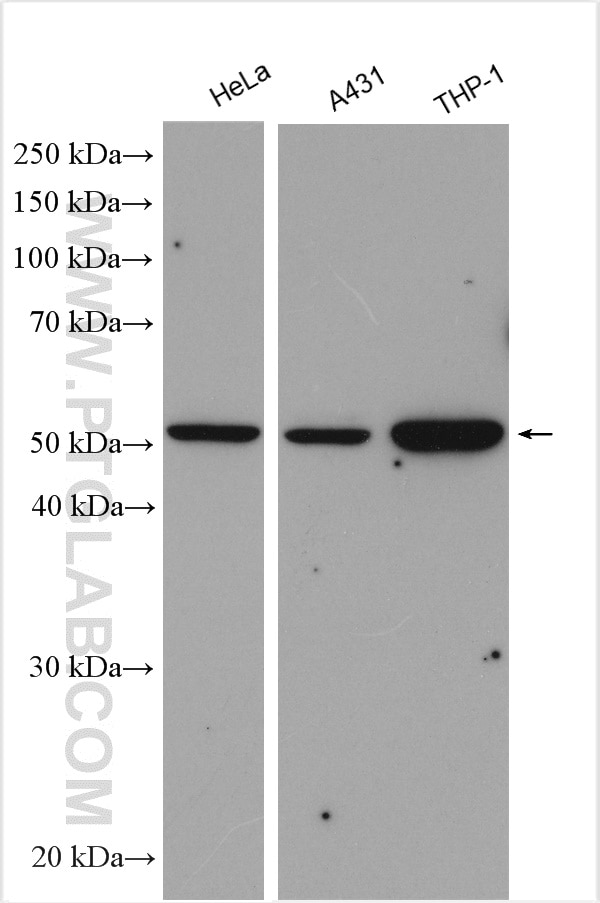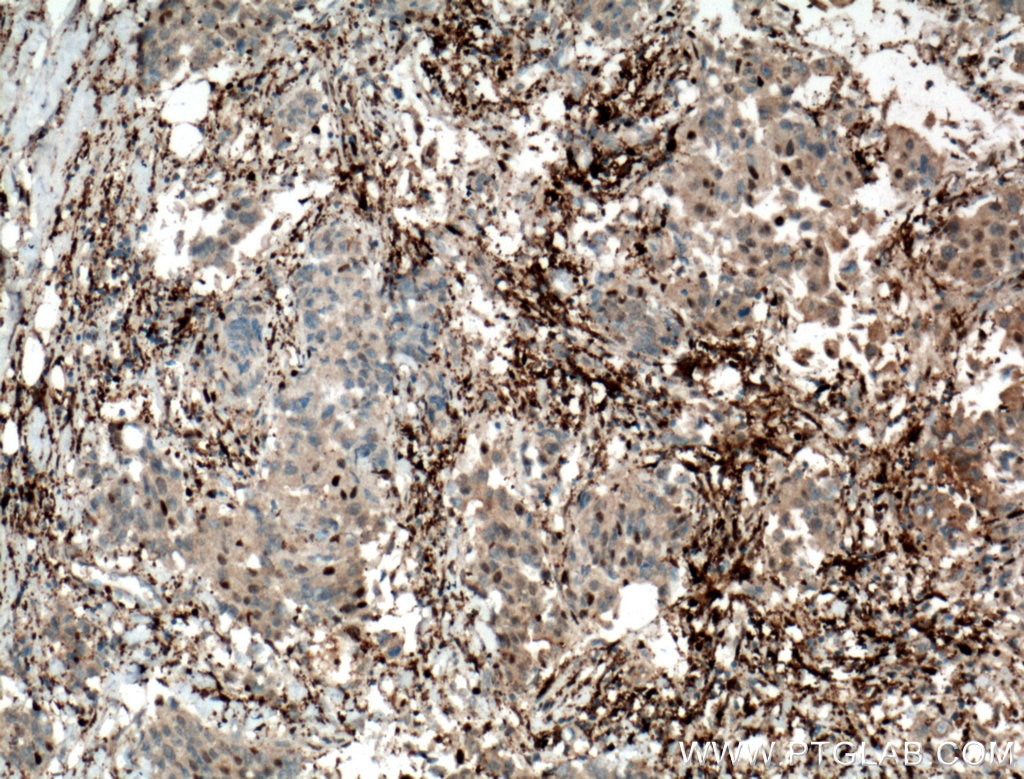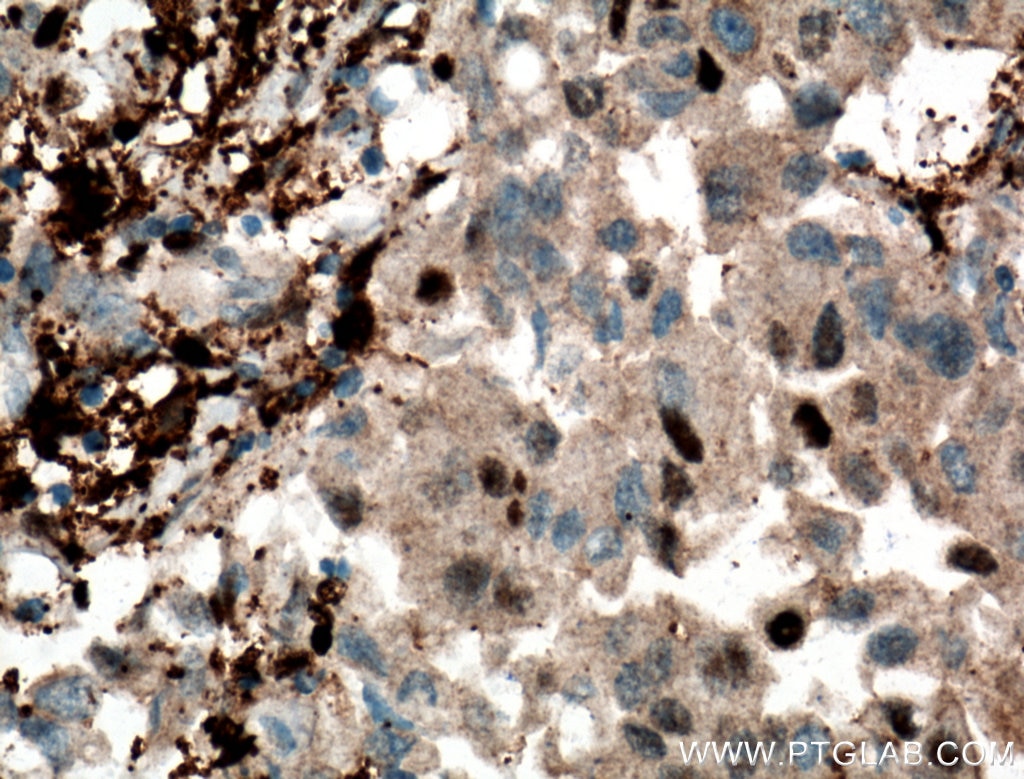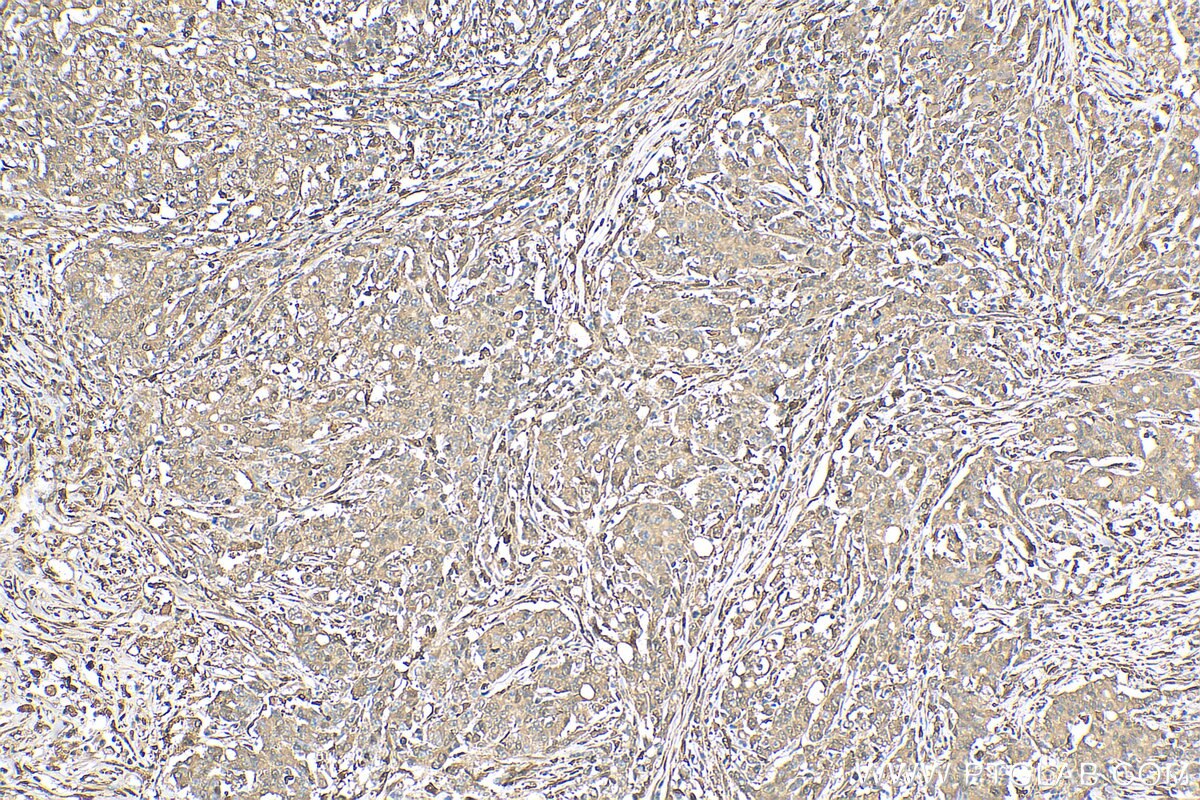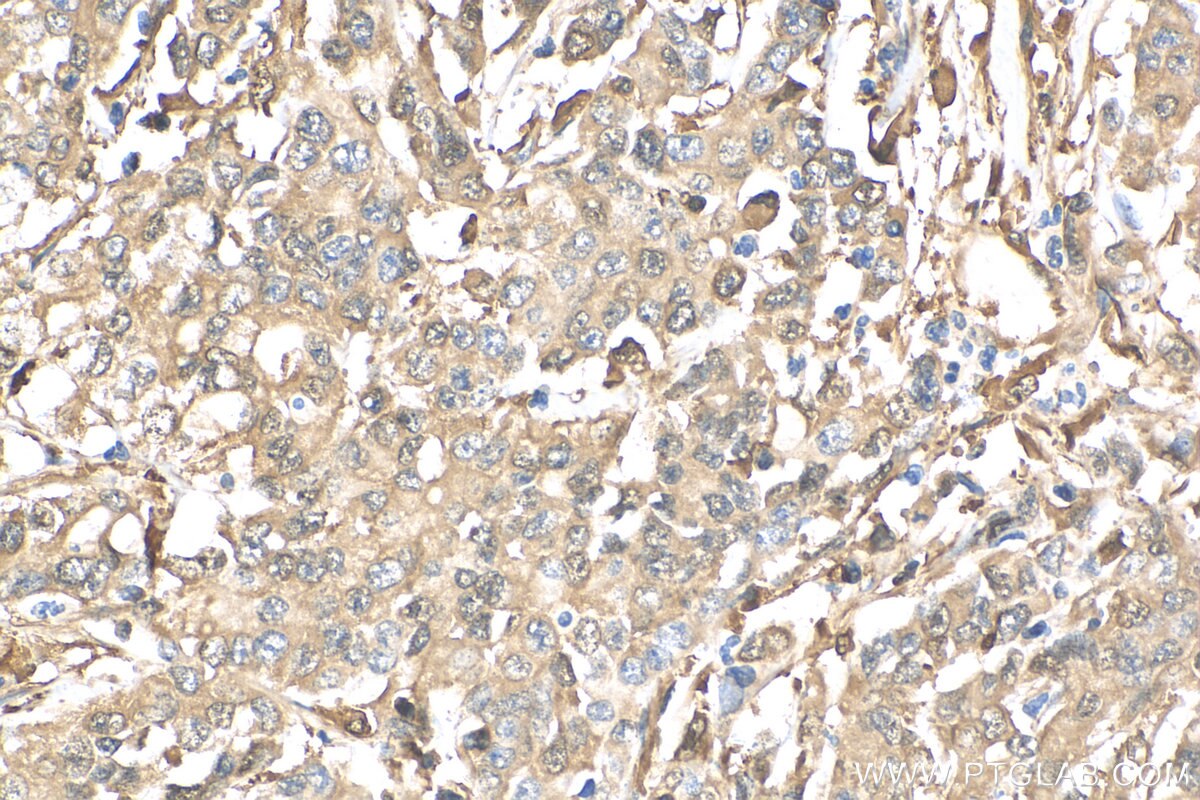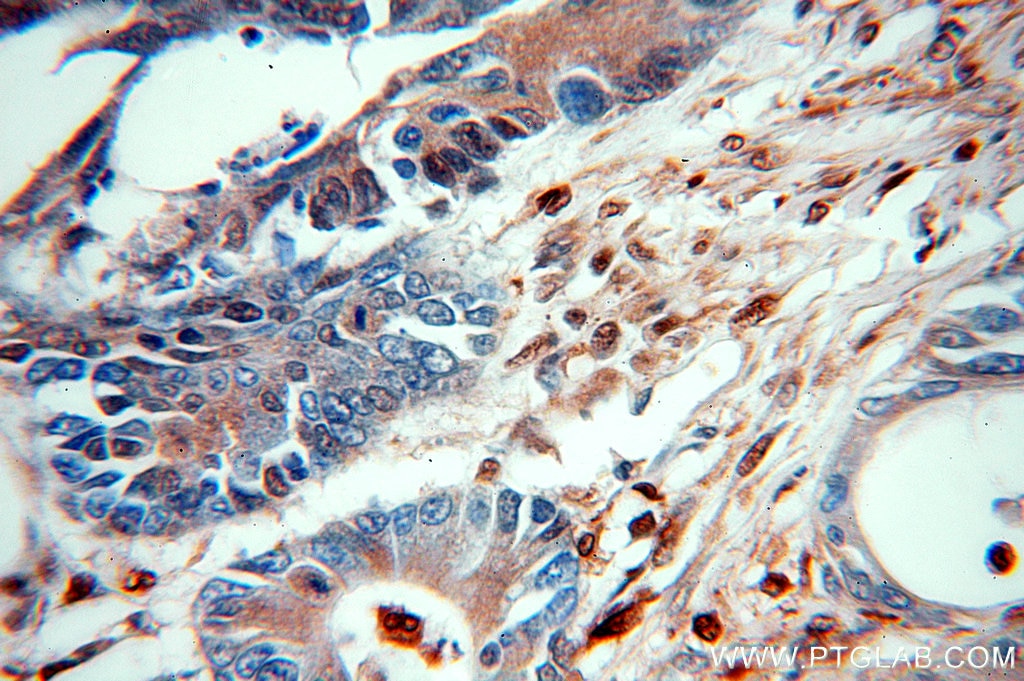Anticorps Polyclonal de lapin anti-PD-ECGF
PD-ECGF Polyclonal Antibody for WB, IHC, ELISA
Hôte / Isotype
Lapin / IgG
Réactivité testée
Humain et plus (1)
Applications
WB, IF, FC, IHC, ELISA
Conjugaison
Non conjugué
N° de cat : 12383-1-AP
Synonymes
Galerie de données de validation
Applications testées
| Résultats positifs en WB | cellules A431, cellules HeLa, cellules THP-1 |
| Résultats positifs en IHC | tissu de cancer du sein humain, tissu de cancer de l'estomac humain, tissu de tumeur ovarienne humain il est suggéré de démasquer l'antigène avec un tampon de TE buffer pH 9.0; (*) À défaut, 'le démasquage de l'antigène peut être 'effectué avec un tampon citrate pH 6,0. |
Dilution recommandée
| Application | Dilution |
|---|---|
| Western Blot (WB) | WB : 1:500-1:2000 |
| Immunohistochimie (IHC) | IHC : 1:50-1:500 |
| It is recommended that this reagent should be titrated in each testing system to obtain optimal results. | |
| Sample-dependent, check data in validation data gallery | |
Applications publiées
| WB | See 4 publications below |
| IHC | See 1 publications below |
| IF | See 1 publications below |
| FC | See 1 publications below |
Informations sur le produit
12383-1-AP cible PD-ECGF dans les applications de WB, IF, FC, IHC, ELISA et montre une réactivité avec des échantillons Humain
| Réactivité | Humain |
| Réactivité citée | Humain, souris |
| Hôte / Isotype | Lapin / IgG |
| Clonalité | Polyclonal |
| Type | Anticorps |
| Immunogène | PD-ECGF Protéine recombinante Ag3052 |
| Nom complet | thymidine phosphorylase |
| Masse moléculaire calculée | 482 aa, 50 kDa |
| Poids moléculaire observé | 50 kDa |
| Numéro d’acquisition GenBank | BC018160 |
| Symbole du gène | Thymidine phosphorylase |
| Identification du gène (NCBI) | 1890 |
| Conjugaison | Non conjugué |
| Forme | Liquide |
| Méthode de purification | Purification par affinité contre l'antigène |
| Tampon de stockage | PBS avec azoture de sodium à 0,02 % et glycérol à 50 % pH 7,3 |
| Conditions de stockage | Stocker à -20°C. Stable pendant un an après l'expédition. L'aliquotage n'est pas nécessaire pour le stockage à -20oC Les 20ul contiennent 0,1% de BSA. |
Informations générales
Platelet derived endothelial cell growth factor (PD-ECGF), also known as thymidine phosphorylase (TP), induces migration and angiogenesis in endothelial and tumor cells, and was upregulated in various malignancies compared to that in normal tissues. Interestingly, PD-ECGF has dual effect on tumor development and chemotherapy. It could stimulate cancer cell migration and proliferation. On the other hand, some chemotherapeutic agents (5-fluorouracil, capecitabine, etc.) were converted to their active forms through TP enzymes.
Protocole
| Product Specific Protocols | |
|---|---|
| WB protocol for PD-ECGF antibody 12383-1-AP | Download protocol |
| IHC protocol for PD-ECGF antibody 12383-1-AP | Download protocol |
| Standard Protocols | |
|---|---|
| Click here to view our Standard Protocols |
Publications
| Species | Application | Title |
|---|---|---|
Oncogene The proteomic characterization of the peritumor microenvironment in human hepatocellular carcinoma. | ||
Acta Pharmacol Sin Exploring the protective effects of schizandrol A in acute myocardial ischemia mice by comprehensive metabolomics profiling integrated with molecular mechanism studies. | ||
J Ovarian Res 4-Methylumbelliferone inhibits ovarian cancer growth by suppressing thymidine phosphorylase expression. | ||
Mol Imaging Biol Evaluation of [(18)F]Fluorothymidine as a Biomarker for Early Therapy Response in a Mouse Model of Colorectal Cancer. | ||
Antioxidants (Basel) D-Penicillamine Reveals the Amelioration of Seizure-Induced Neuronal Injury via Inhibiting Aqp11-Dependent Ferroptosis |
